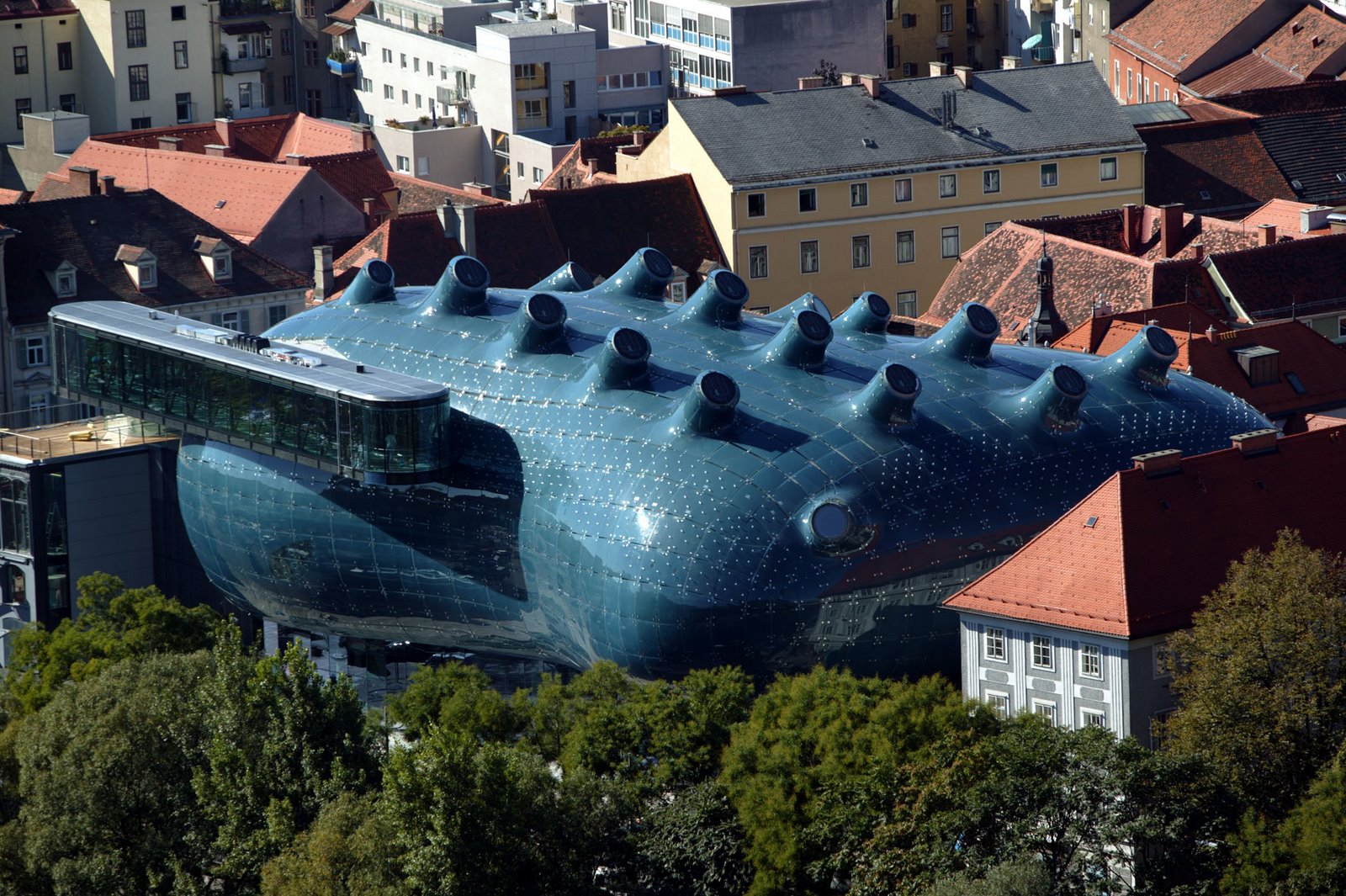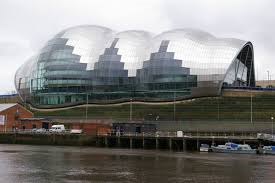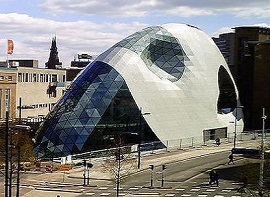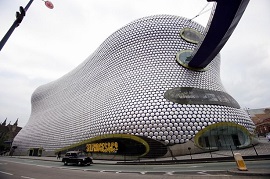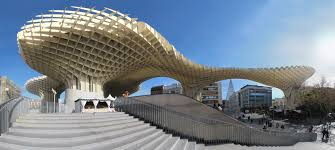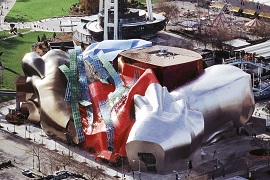Blobitecture
'Blobitecture', also known as 'blobism', is a term given to a post-modern architectural style characterised by curved and rounded building shapes, or 'blob architecture'. Blobitecture buildings appear to have an organic form that is soft and free-flowing, yet comes together to produce a complex whole.
The design of buildings has historically been limited by the performance of materials found in nature or easily manufactured from available materials. With the modern capability of technology to supply entirely 'artificial' complex substances, with unique performance characteristics the range of possible design forms has grown considerably.
Architecture radicals, such as Archigram in the 1960s, Buckminster Fuller and the deconstructivists, began to design unusual, inflatable and 'plastic' buildings that exploited this potential, and sometimes were even beyond the structural possibilities of the time.
However, it was in the 1990s, with the wide-spread adoption of computer-aided design (CAD) that buildings adopting unconventional geometric shapes, free of right-angles, became practical. The architect Greg Lynn coined the term 'blobitecture', which he based on the software feature that created Binary Large Objects.
Some of the most prominent examples of blobitecture include:
De Admirant Entrance Building, Eindhoven
Selfridges Buildings, Birmingham
Metropol Parasol, Seville
Eden Project, Cornwall
Kunsthaus Graz (see top image)
Experience Music Project, Seattle
[edit] Related articles on Designing Buildings Wiki
Featured articles and news
Professional practical experience for Architects in training
The long process to transform the nature of education and professional practical experience in the Architecture profession following recent reports.
A people-first approach to retrofit
Moving away from the destructive paradigm of fabric-first.
International Electrician Day, 10 June 2025
Celebrating the role of electrical engineers from André-Marie Amperè, today and for the future.
New guide for clients launched at Houses of Parliament
'There has never been a more important time for clients to step up and ...ask the right questions'
The impact of recycled slate tiles
Innovation across the decades.
EPC changes for existing buildings
Changes and their context as the new RdSAP methodology comes into use from 15 June.
Skills England publishes Sector skills needs assessments
Priority areas relating to the built environment highlighted and described in brief.
BSRIA HVAC Market Watch - May 2025 Edition
Heat Pump Market Outlook: Policy, Performance & Refrigerant Trends for 2025–2028.
Committing to EDI in construction with CIOB
Built Environment professional bodies deepen commitment to EDI with two new signatories: CIAT and CICES.
Government Grenfell progress report at a glance
Line by line recomendation overview, with links to more details.
An engaging and lively review of his professional life.
Sustainable heating for listed buildings
A problem that needs to be approached intelligently.
50th Golden anniversary ECA Edmundson apprentice award
Deadline for entries has been extended to Friday 27 June, so don't miss out!
CIAT at the London Festival of Architecture
Designing for Everyone: Breaking Barriers in Inclusive Architecture.
Mixed reactions to apprenticeship and skills reform 2025
A 'welcome shift' for some and a 'backwards step' for others.







